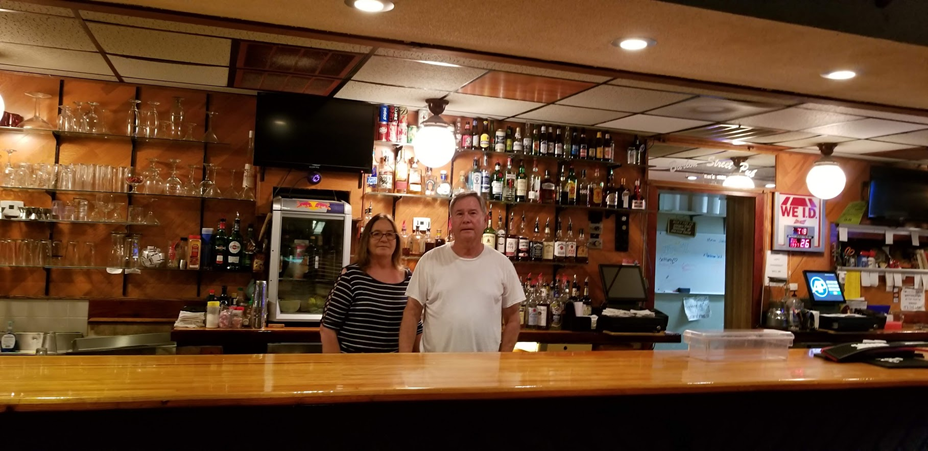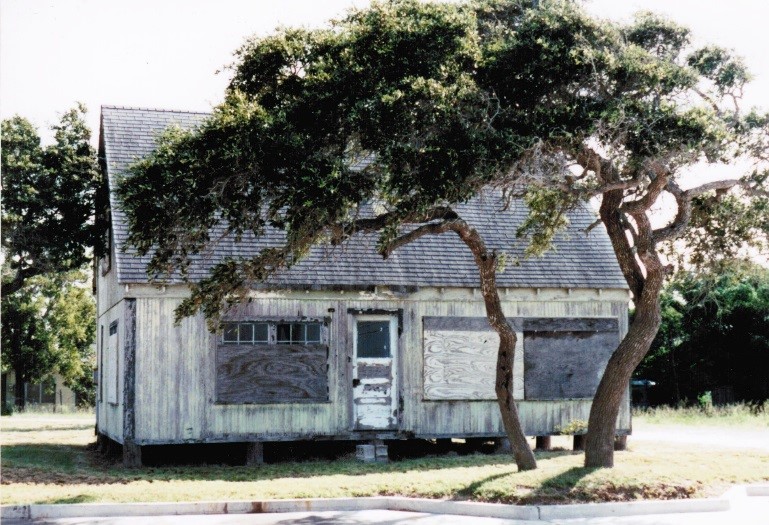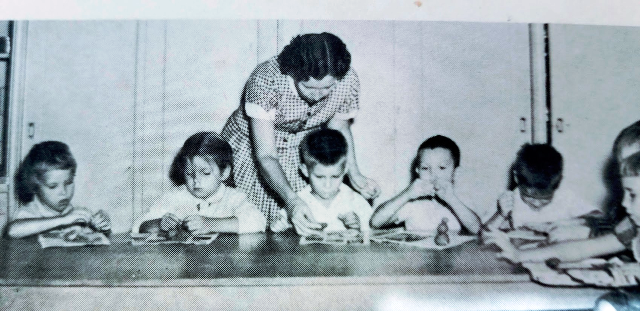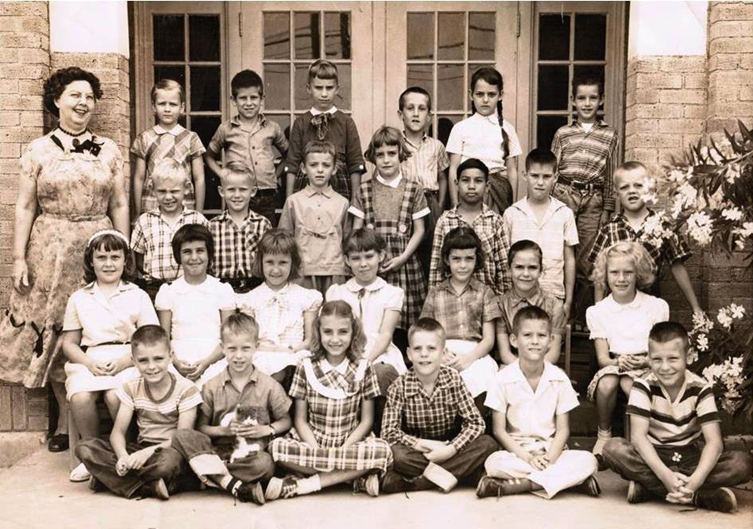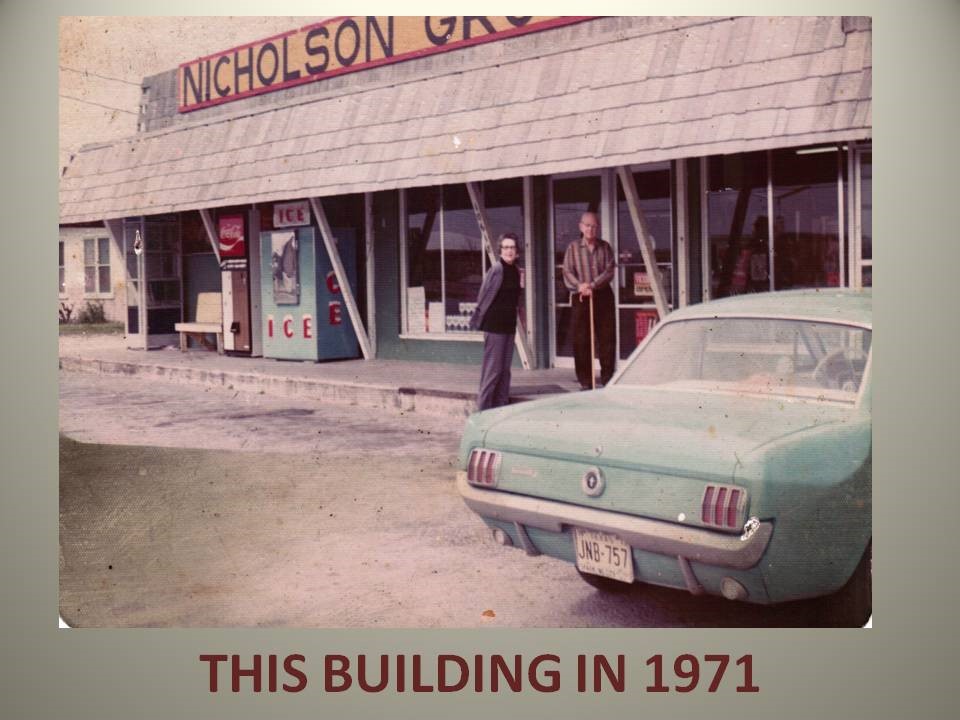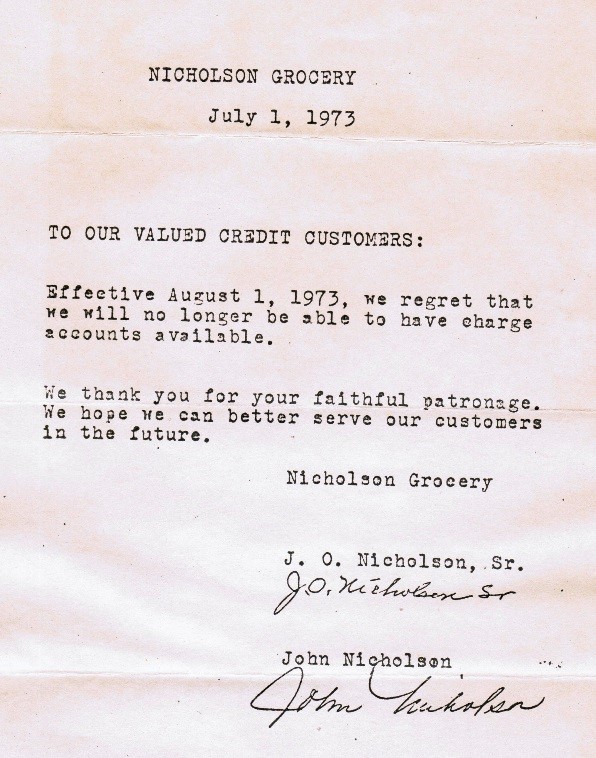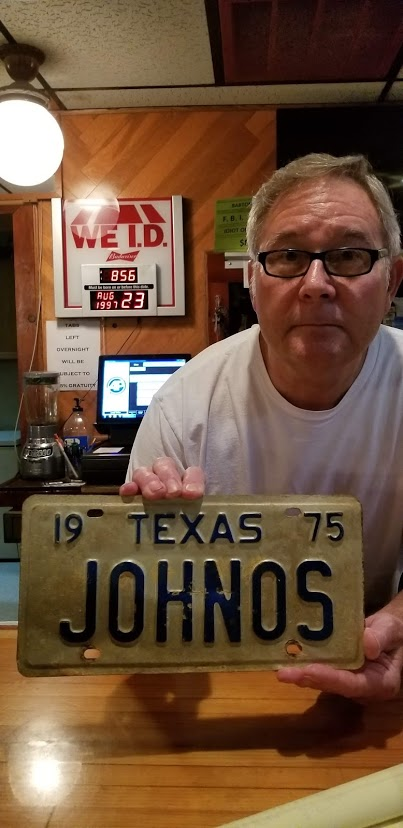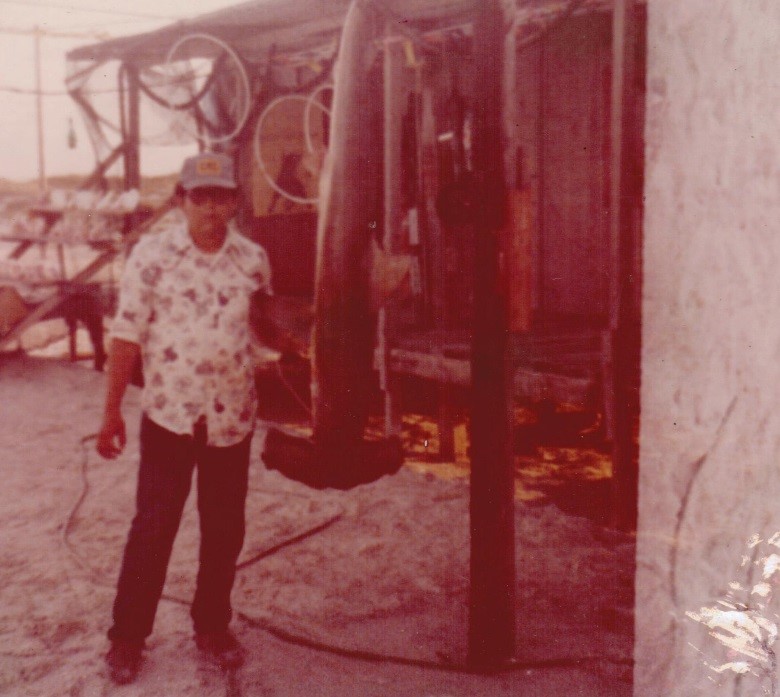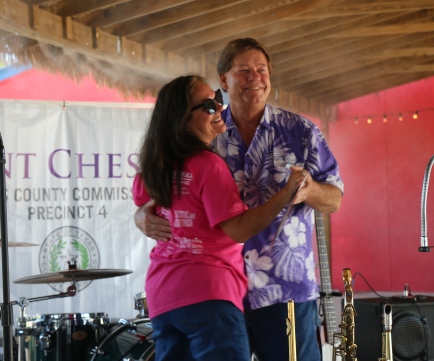To preserve the rich history of Flour Bluff, The Texas Shoreline News, will run historical pieces and personal accounts about the life and times of the people who have inhabited the Encinal Peninsula. Each edition will feature the stories gleaned from interviews held with people who remember what it was like to live and work in Flour Bluff in the old days. You won’t want to miss any of these amazing stories.
Lisa and John Nicholson, 2018 (Photo by Shirley Thornton)
Cleta and John Orval Nicholson II took their baby boy home from Spohn Hospital on Shoreline to 338 Davis Drive in 1950 to live in the two-story house behind Nicholson’s Grocery with big sister Sally. This little guy would take the name of his father and his grandfather, but he would come to be known simply as “Johno” to all. He would later inherit the family business, which he saw as a blessing and a curse. Times were often hard, but with his work experience, a solid education from Flour Bluff School and Del Mar College, the mentorship of his grandfather and other small business owners, this enterprising young man and Lisa, his wife and business partner, took what had become a failing grocery store and turned it into the thriving, local landmark, Barton Street Pub.
Two-story house behind grocery store, ca. 1980s (Photo courtesy of John Nicholson)
Johno attended Flour Bluff School from first through twelfth grade. “My sister Sally and I were somewhat well-known because of the store,” said Johno. “Anybody who owned a business was well-known because the families traded with them, but I was a shy kid.”
Johno remembers his first days in Flour Bluff School. “There was a surge of kids at the beginning of my first-grade year, and the school was not ready for them,” he said. “I started out in the old 1939 building with Mrs. Grace Malinowski, but within a few days, they shifted us all around, and I ended up in the newer wing of the building with Mrs. Clark.”
Mrs. Clark gives John Nicholson clay during class. (1957 Hornet Yearbook photo)
One of his favorite teachers was Miss Willis. “Everyone called her Miss Eunice,” he said. “She was a country girl who taught second grade. In her class, we churned butter and grew things, and she taught us to write cursive. I was acting up one day in her class. She came over to my chair and got me and led me back to her desk, which was behind us. She put me on her lap and popped me one time. Then, she made me stay on her lap while she kept teaching. I was so embarrassed that I never acted up the rest of the year. She was a treasure. Everybody loved her.”
This is Miss Eunice Willis and her 2nd -grade class. John Nicholson is second from the right, front row, but who are the others? Contact the editor if you can identify any of them. (1957 Hornet Yearbook photo)
Miss Willis, like many Flour Bluff teachers, lived in the teacherages that Mr. Wranosky, school superintendent, had built for them. “There were many others who lived in the houses on the school circle, too,” said Johno. “Miss Arnold, Mr. Odom, B.J. Howard, the Wranoskys, and other teachers lived on school grounds.”
“Mr. Wranosky was a good man,” said Johno. “He cared about every kid in that school. He made special arrangements for all the special education students. He was a true educator and knew every kid by name. When kids went to the cafeteria without any money, the cashier wrote their names down and sent them on to get their food, but the school never collected. We had a lot of poor kids in Flour Bluff back then, and Mr. Wranosky made sure they got to eat.”
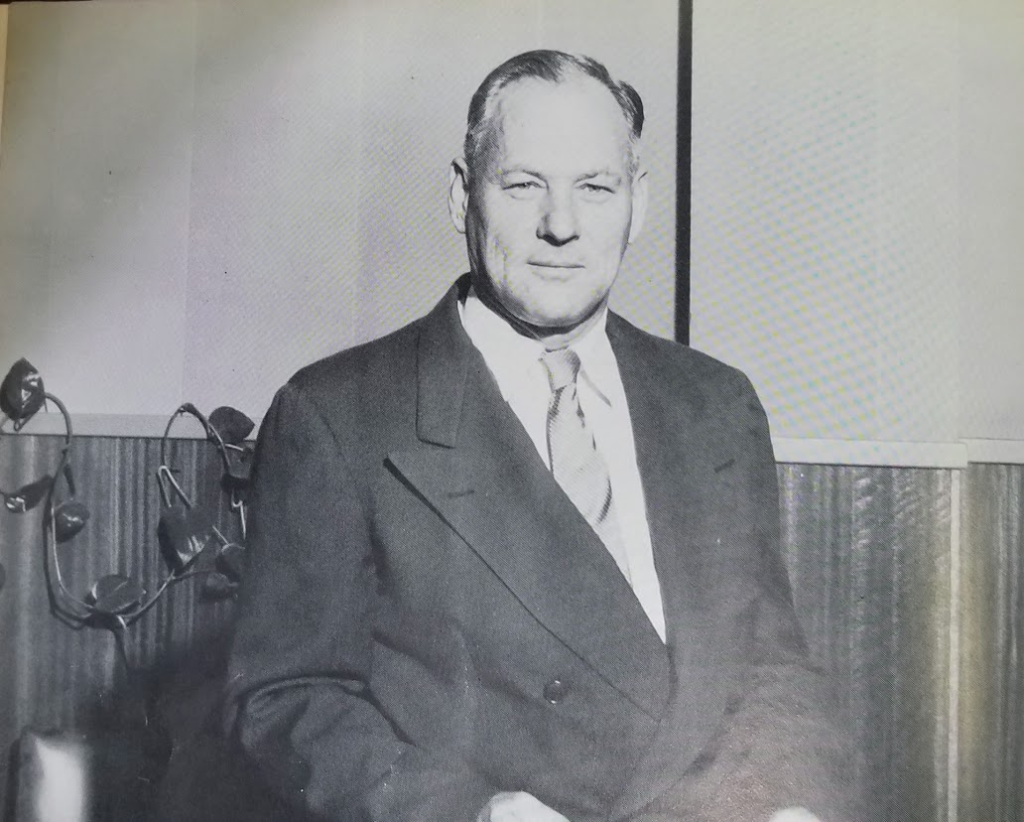 E. J. Wranosky, Superintendent of Flour Bluff Schools, ca. 1959 (1959 Hornet Yearbook photo)
E. J. Wranosky, Superintendent of Flour Bluff Schools, ca. 1959 (1959 Hornet Yearbook photo)
In 1967-68, his senior year, Johno was able to use the skills he acquired from working the family business and his education when Mr. Wranosky gave him a job as part of the Distributive Education (DE) Program. He went to school from 8:00 a.m. to noon and worked at Central Office from noon to 4:00 p.m. In the summertime, he worked six to eight hours each day. He started at 90 cents an hour but quickly earned a 35-cent raise. “That was a lot of money to start and quite an honor to get a raise like that,” said Johno.
“They started me in the print shop in the back,” he said. “They liked me and the way I worked, so they moved me up to the front desk to help Mrs. Harris. I answered the phone and transferred all calls. I received and distributed the mail. I greeted all people who came in. I handled all the accounts payable, so I wrote the checks for the board members to sign. I also wrote checks for the transportation department. Once Jason Wranosky ordered a brand-new bus. He came in from looking it over, handed me the bill, and told me to write a check for $10,000! I had never written a check for that much, and I was shaking when I took it into Miss Arnold to sign!”
When Johno’s father died in 1967, his mother took over the running of the grocery store. “I worked at the school but still worked weekends helping my mother,” said Johno. “The grocery business for us was not good at that time. There were too many stores in Flour Bluff, and HEB opened up in 1964. That took its toll on many of the smaller grocery stores. Frank Buhider, who owned Frank’s Foodland, was the first to close.”
Daddy John Nicholson stands in front of store in 1971 (Photo courtesy of Johno Nicholson)
Nicholson’s Grocery would remain in business for a few more years. During that time, Johno’s sister Sally married her high school sweetheart, moved away, and started her own life. Johno attended Del Mar College where he studied computer programming. “They taught us how they worked. I took typing and keypunch, and I took accounting, which was very difficult. They were preparing us to go out into the corporate world. The principles and the concepts were valuable for the day-to-day running of any business,” said Johno.
Nicholson’s Grocery was barely holding on when Lisa Proctor was hired to work there. “Lisa came in 1972. My mother passed away in 1973, and I took over the store full time,” said Johno. “Before she passed, we were having a hard time, but it really went downhill after she died. A lot of our customers owed us money from unpaid tabs, and we were borrowing money to keep it open. Daddy John and I had to send letters letting people know that we could no longer extend them credit. It was hard to cut folks off, but we couldn’t pay our own bills. The grocery would come in, and we didn’t have the money to pay for them. I was writing hot checks, and girl down at 1st National Bank would call me almost every morning for me to bring cash to cover the checks. It cost me two dollars on each one. That went on for a long time, and finally I just couldn’t cover them. We didn’t re-stock the store. We just started selling everything out that we had.”
Johno went to work for other small business owners in Flour Bluff while Lisa and Daddy John continued to run the store. “I went to work for Doug Turner as a welder’s helper. I did the grinding, the painting, and the cutting to set him up to weld. I took the money I earned with Doug and put it into the store to keep the doors open,” he said.
In 1975, Johno heard about a lease available on Padre Island at the Nueces-Kleberg county line. “It was 21 acres on the beach,” he said. “Mrs. Oshaski had rented it and had a little store out there. She had abandoned the store, so I called the Cadwallader Development Company in San Antonio; they owned the property. They were tickled to give me the lease because at that time landowners were trying to establish ownership above the state on beach frontage. Both were claiming ownership. By leasing to me, they were kind of using me as a way to prove ownership. I paid $120 a month. I bought a portable building for $350 from Mr. McManus, and I bought Mrs. Oshaski’s building for $50. He let me pay it out because I didn’t have any money. We had it hauled over here to fix it up then borrowed Doug Turner’s wrecker truck to pull out to the beach and hooked up the electricity. We even had a phone out there.”
Johno and Lisa named the store Johno’s, got their beer license, and started selling beer, ice, soft drinks, cigarettes, and snacks. “We were doing pretty well when a guy from the state contacted us and said we had to go to Austin. That’s when they told us we were on their property. I showed them my lease, but they didn’t care,” said Johno. “They wanted us to move the building back 50 feet. They said if we did that we could stay there until we died or blew away. So, we moved both buildings back. We had the store in our building, and we leased the Oshaski building to a hippie who wanted to open a shell shop. That didn’t work out, so we just kept it as a place to stay while we were out there.”
John Nicholson holds personalized car tag with name of beach store. (Photo by Shirley Thornton)
The sand was soft in front of the store at its new location. Johno decided he needed to wet it down to keep the customers from getting stuck. “I had heard that there was water just a few feet down,” Johno said. “So, I bought a well point with a fine screen on it to drive into the ground. I put it down seven feet and attached a little pump to it. It was an endless supply of the sweetest water you’d ever want to drink, and I had plenty of water to sprinkle the sand to keep folks from getting stuck.”
Tom Hale, who owned Ira’s at the entrance to Bob Hall Pier, set it up for Johno to get shark caught by the fishermen. “We put in a tall pole with a wench on it, and we would hang the shark to attract people to come to see it with the hopes that they’d buy something, too. All we had to do was give Tom the jaws from the shark,” said Johno. “We kept water running on the shark the whole time because they didn’t last long. When they got too stinky, we’d take them down and drag them to the shark burial grounds behind the bath house close to the pier. The county would come along and cover the shark up with sand.”
Tourist posing with hammerhead shark hanging in front of Johno’s, ca. 1977 (Photo courtesy of John Nicholson)
Johno and Lisa managed to keep Nicholson’s Grocery open for a little bit longer. “Lisa and I were dating, and we decided to convert the store into a bar. We walled off what was left of the store and built a 1000 square foot bar on the other side. Nicholson’s Grocery closed on December 5, 1975. That was the day we got our beer license and opened our first bar, the Barnstormer.”
“We did pretty well at the island store until the water came in really high in 1977,” said Johno. “It destroyed our building, and that ended that.”
Next edition: Read the final installment of the history of the Nicholson family to learn about this family of entrepreneurs who forged a path to success with some very unusual ventures.
———————————————————————————————————————————–
Be sure to pick up the next edition of The Texas Shoreline News to read stories from other longtime residents of Flour Bluff. To share these stories about Flour Bluff history with others online, visit https://texasshorelinenews.com/.
The editor welcomes all corrections or additions to the stories to assist in creating a clearer picture of the past. Please contact the editor at [email protected] to submit a story about the early days of Flour Bluff.
